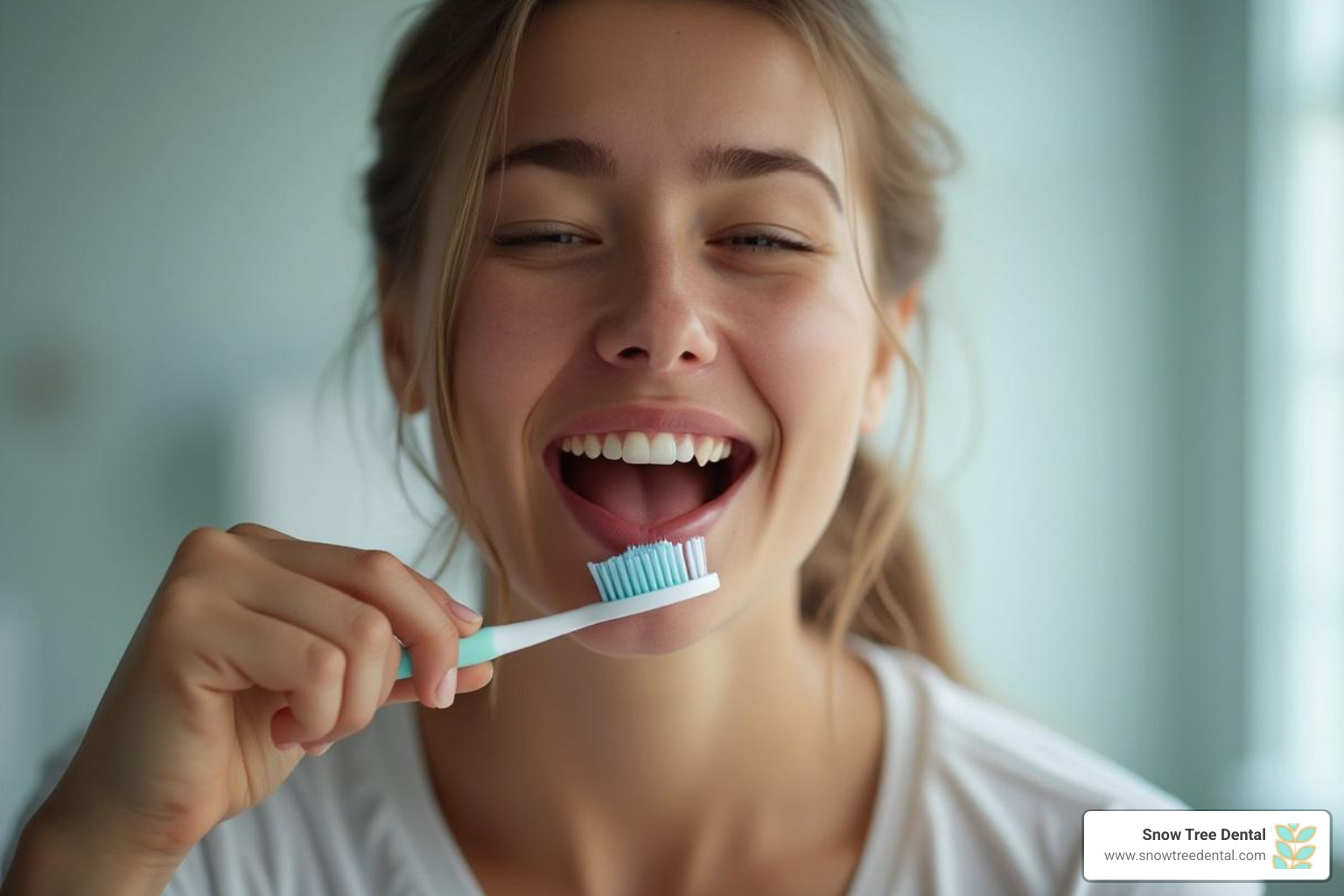Bad Breath Treatment: End Embarrassment 2025
Why Bad Breath Affects More Than Just Your Confidence
Bad breath treatment is a top dental concern, and for good reason. Halitosis affects up to 50% of the population, making it the third most common reason people visit their dentist. While it can be socially awkward, it can also signal underlying health issues like gum disease or diabetes. The good news is that most cases are treatable.
Quick Bad Breath Treatment Solutions:
- Brush and floss twice daily with fluoride toothpaste
- Clean your tongue daily with a scraper or brush
- Use alcohol-free antibacterial mouthwash
- Stay hydrated by drinking plenty of water
- Chew sugar-free gum to stimulate saliva
- See a dentist if bad breath persists
As Dr. Amanda Canto from Cleveland Clinic notes, feeling comfortable discussing bad breath with a professional “takes away a lot of the anxiety.” This guide will walk you through proven strategies to tackle halitosis at its source.
I’m Dr. Muna Mohammad of Snow Tree Dental in Houston. I’ve helped countless patients overcome bad breath with personalized bad breath treatment plans. My experience shows that understanding the root causes and following evidence-based approaches leads to lasting fresh breath.
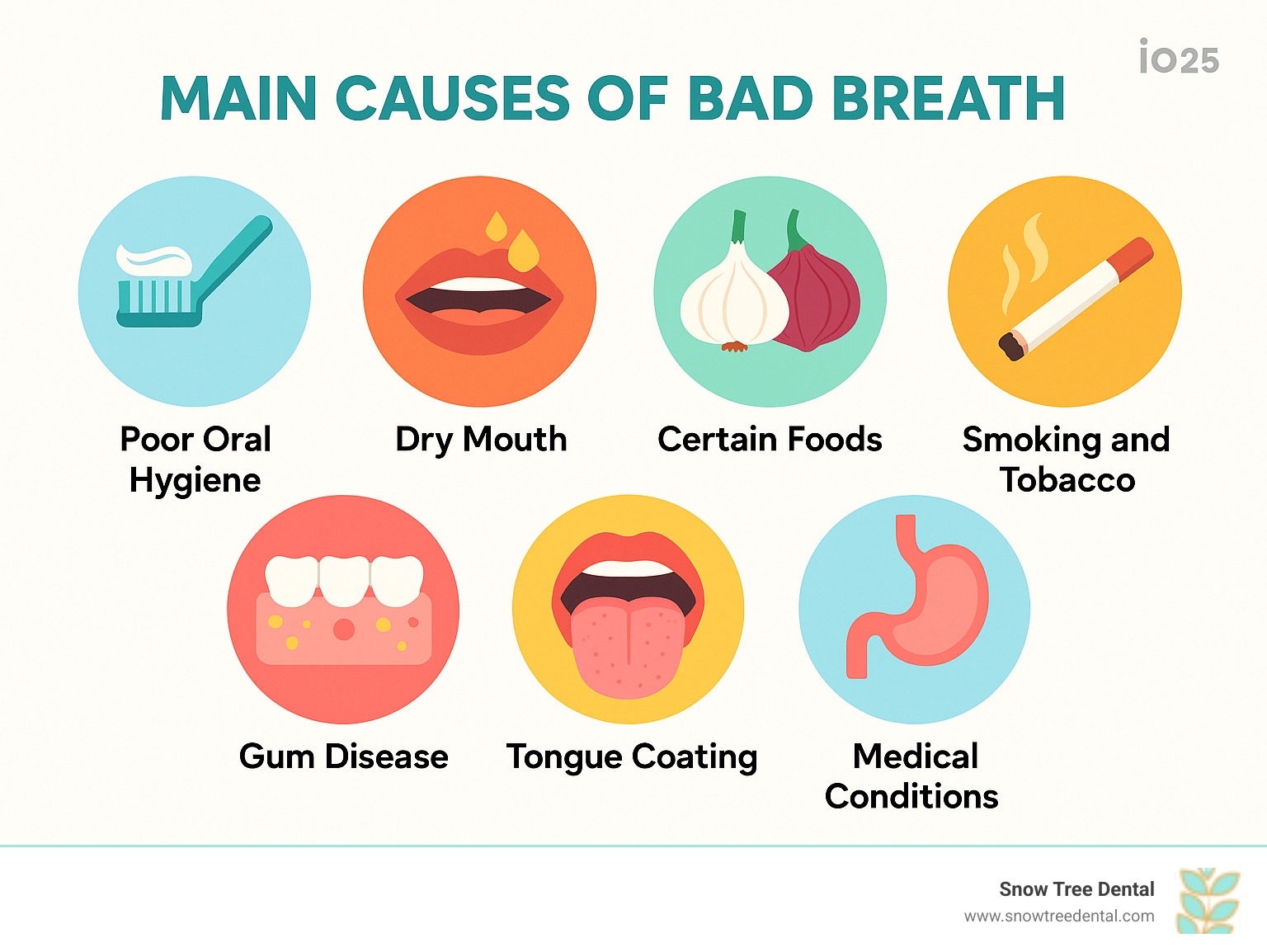
Understanding Halitosis: The Root Causes of Bad Breath
Halitosis, the medical term for bad breath, is a common concern. Bad breath treatment starts with understanding its cause. In most cases, bacteria in the mouth break down food particles, releasing foul-smelling Volatile Sulfur Compounds (VSCs). Research shows that 80-85% of bad breath cases originate in the mouth and are highly treatable. Oral malodour (halitosis) – PubMed
However, sometimes the cause is systemic, meaning it originates elsewhere in the body. Let’s break down both oral and systemic causes.
The Most Common Culprits: Oral Health Issues
Most often, the cause of bad breath is in your mouth, which makes it easier to fix with the right bad breath treatment.
- Poor oral hygiene: Forgetting to brush and floss allows food particles to remain, feeding odor-causing bacteria.
- Plaque and tartar buildup: Plaque, a sticky bacterial film, hardens into tartar, providing more surface area for bacteria to grow.
- Gum disease: Gingivitis (inflamed gums) can progress to periodontitis, where gums pull away from teeth, creating deep, smelly pockets of bacteria. This is why regular preventative dentistry is crucial. Preventative Dentistry
- Tongue coating: The white or yellow film on your tongue is a collection of bacteria, dead cells, and food debris that produces foul odors.
- Tooth decay: Cavities create hiding spots for food and bacteria that are difficult to clean, contributing to bad breath.
When It’s Not Just Your Mouth: Systemic and Lifestyle Factors
If your oral hygiene is excellent but bad breath persists, we need to look at other factors.
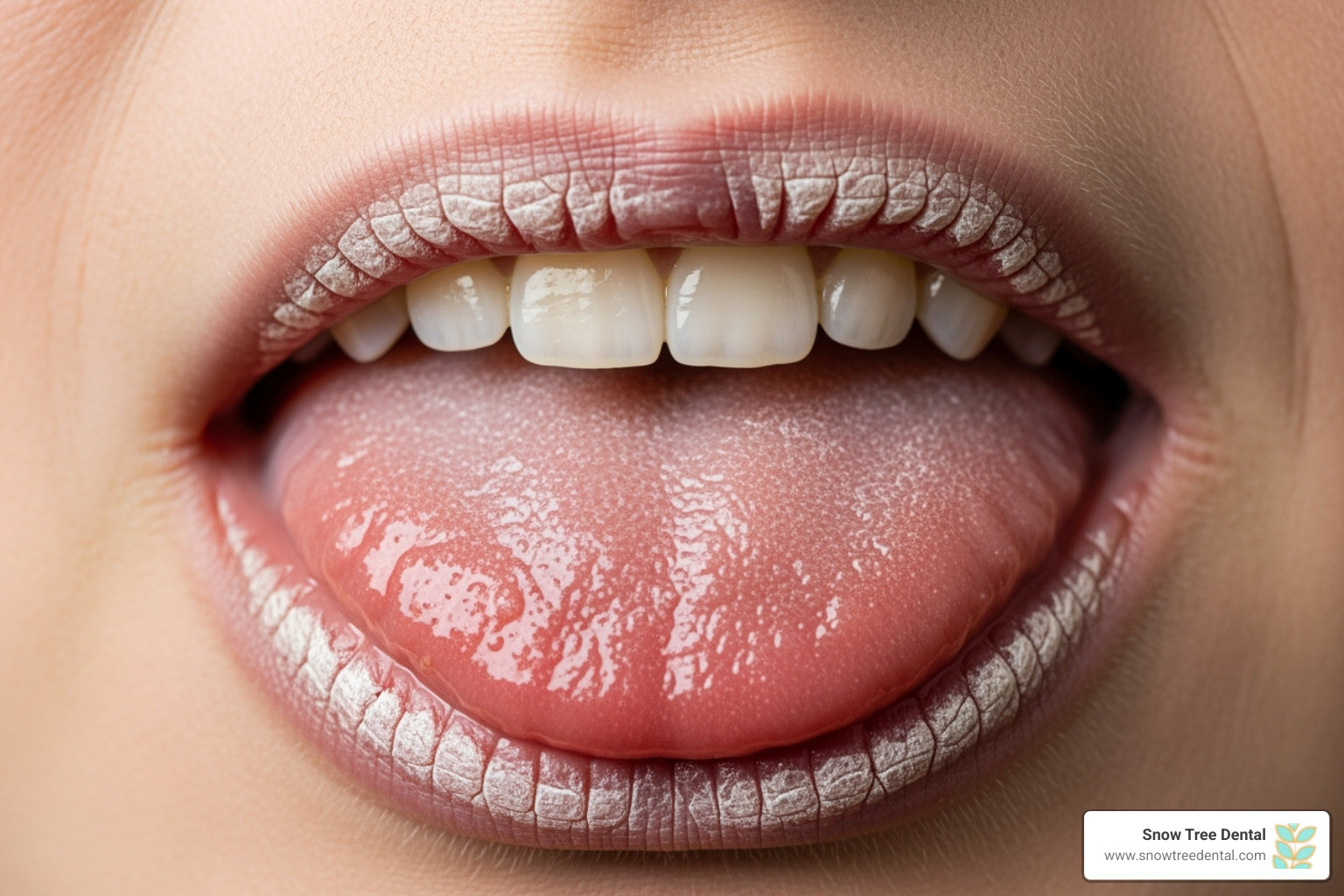
- Dry mouth: Saliva is your mouth’s natural cleanser. A lack of it, often caused by medications or mouth breathing, allows bacteria to thrive.
- Certain foods: Compounds in foods like garlic and onions are absorbed into your bloodstream, carried to your lungs, and then exhaled.
- Smoking and tobacco: These products dry out your mouth, leave their own odor, and increase your risk for gum disease.
- Tonsil stones: These calcified deposits in your tonsils trap bacteria and debris, producing a foul smell.
- Medical conditions: Persistent bad breath can be a sign of other health issues. Uncontrolled diabetes can cause a fruity odor, while GERD (acid reflux) can create a sour smell. Self-reported halitosis and gastro-esophageal reflux disease – PubMed Kidney or liver disease can cause fishy or ammonia-like odors, and respiratory infections can also contribute.
Understanding the specific cause is the first step in effective bad breath treatment.
Your First Line of Defense: At-Home Bad Breath Solutions
The good news is that most bad breath can be managed at home. Effective bad breath treatment involves a consistent daily routine that creates an oral environment where odor-causing bacteria can’t thrive, rather than just masking smells.
Master Your Oral Hygiene Routine
A thorough oral hygiene routine is your best defense against bad breath.
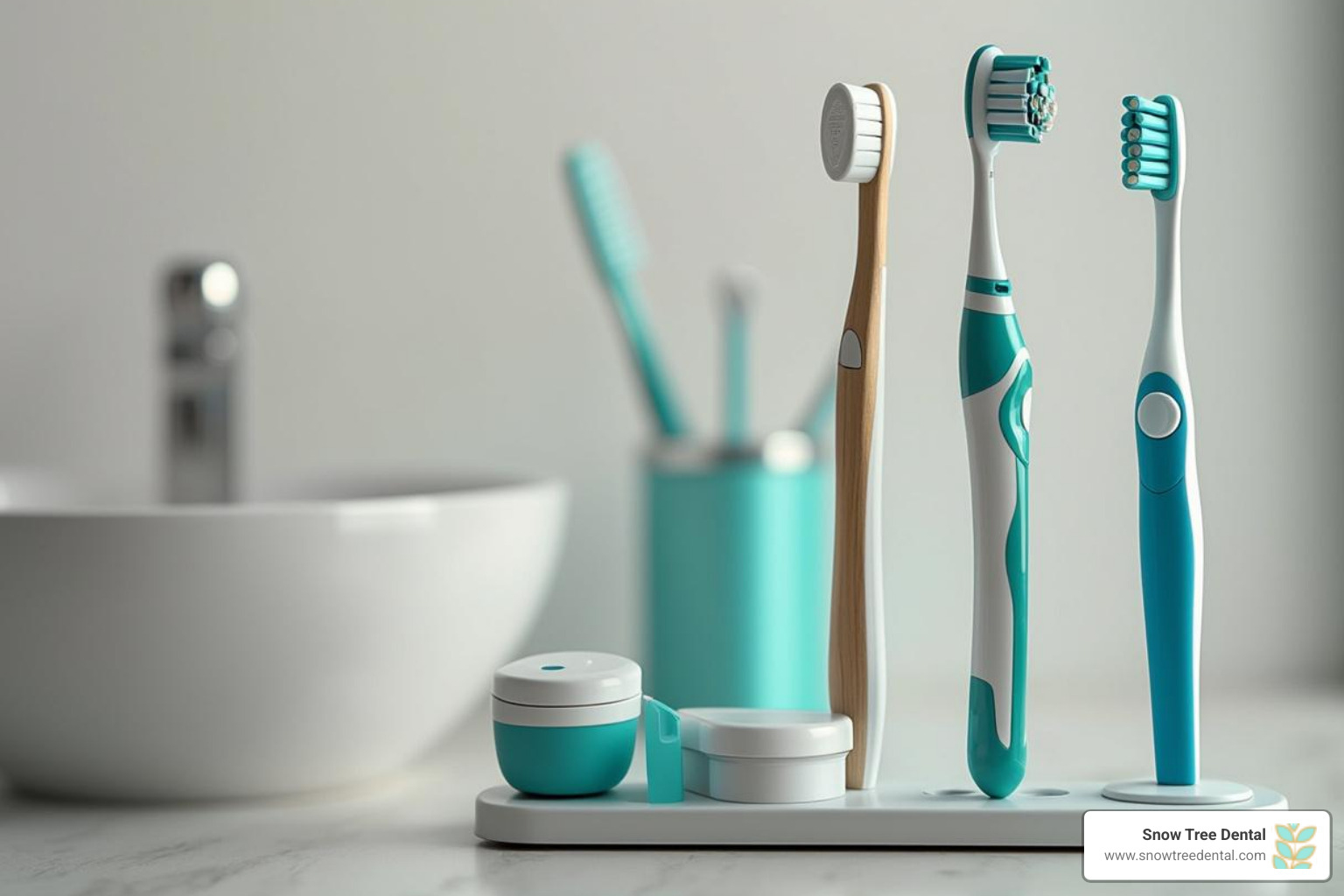
- Proper brushing technique: Brush for two minutes, twice a day, with fluoride toothpaste. Gently brush along the gumline where bacteria hide. For detailed instructions, see the Cleveland Clinic’s guide on how to brush your teeth.
- Flossing daily: This is non-negotiable for effective bad breath treatment. Flossing removes trapped food particles from between teeth where your brush can’t reach. Cleveland Clinic offers a helpful guide on how to floss your teeth.
- Tongue scraping: The coating on your tongue is a major source of odor. Use a tongue scraper or your toothbrush to remove this bacterial buildup daily. Cleveland Clinic explains why tongue scraping actually works.
- Using alcohol-free antibacterial mouthwash: Alcohol-based rinses can dry out your mouth, worsening bad breath. Choose alcohol-free formulas with ingredients like zinc or cetylpyridinium chloride that target odor-causing bacteria.
Lifestyle and Diet Hacks for Fresher Breath
Your diet and lifestyle choices significantly impact your breath. Simple changes can be a powerful part of your bad breath treatment plan.
- Stay hydrated: Water washes away food particles and stimulates saliva, your body’s natural mouthwash. Drink plenty of water, especially after coffee or alcohol.
- Chew sugar-free gum: This stimulates saliva production, which helps rinse away bacteria. Ensure it’s sugar-free to avoid feeding bacteria.
- Limit coffee and alcohol: Both can cause dry mouth, a prime condition for bacteria to multiply. Drink water after consuming them to counteract this effect.
- Eat breath-friendly foods: Apples can help neutralize garlic breath. Plain yogurt with live cultures can reduce bad breath, a finding supported by research. Studies on yogurt for bad breath. Green tea and fresh parsley also have natural breath-freshening properties.
Combining good hygiene with smart dietary choices creates an environment where fresh breath can flourish.
When to Seek Professional Help for Bad Breath
If at-home efforts don’t resolve bad breath, it’s time to see a professional. Persistent halitosis can be a sign that something needs expert attention. While most bad breath treatment starts at home, a dentist has the tools and knowledge to uncover the root cause of stubborn odor.
Signs You Need to See a Dentist
Certain red flags indicate it’s time to schedule a dental visit:
- Persistent bad breath: If a solid oral hygiene routine doesn’t improve your breath after several weeks, a professional evaluation is needed.
- Bleeding or swollen gums: These are classic signs of gum disease, a leading cause of halitosis.
- Tooth pain or loose teeth: These can signal advanced decay or severe gum disease, which require professional treatment.
- Problems with oral appliances: If dentures or retainers retain odors despite cleaning, they may be harboring bacteria.
Our General Dentistry services at Snow Tree Dental are designed to diagnose and treat these underlying issues.
The Professional Diagnostic Process
A professional visit involves a thorough investigation to pinpoint the cause of halitosis, following methods recommended by institutions like the Mayo Clinic. Bad breath – Diagnosis and treatment – Mayo Clinic
- Dental Exam: We conduct a comprehensive check of your teeth, gums, tongue, and tonsils for issues like cavities, gum disease, or tonsil stones.
- Medical History Review: We discuss your diet, medications, and health conditions (like diabetes or acid reflux) to identify potential systemic causes.
- Odor Assessment: We may professionally evaluate the odor from your mouth and nose to better understand its source.
- Specialized Tests: If needed, we can use advanced tools to measure sulfur compounds or detect specific bacteria, helping us create a precise bad breath treatment plan.
Managing Dentures and Oral Appliances
Oral appliances like dentures and retainers can harbor odor-causing bacteria if not cleaned properly.
- Bacteria Colonization: Appliances can accumulate bacteria that produce unpleasant compounds, just like natural teeth.
- Daily Cleaning: Brush appliances daily with a non-abrasive cleanser and a soft brush. Avoid regular toothpaste, which can be too harsh.
- Overnight Soaking: Soaking dentures gives your gums a rest and allows cleaning solutions to kill bacteria and loosen debris.
- Proper Storage: Store your appliance in a clean environment as directed by your dentist.
As part of our Services, we provide guidance on caring for oral appliances to ensure they don’t contribute to bad breath.
Advanced Bad Breath Treatment and Long-Term Prevention
After identifying the cause, we focus on comprehensive bad breath treatment and long-term prevention, combining professional interventions with at-home care.
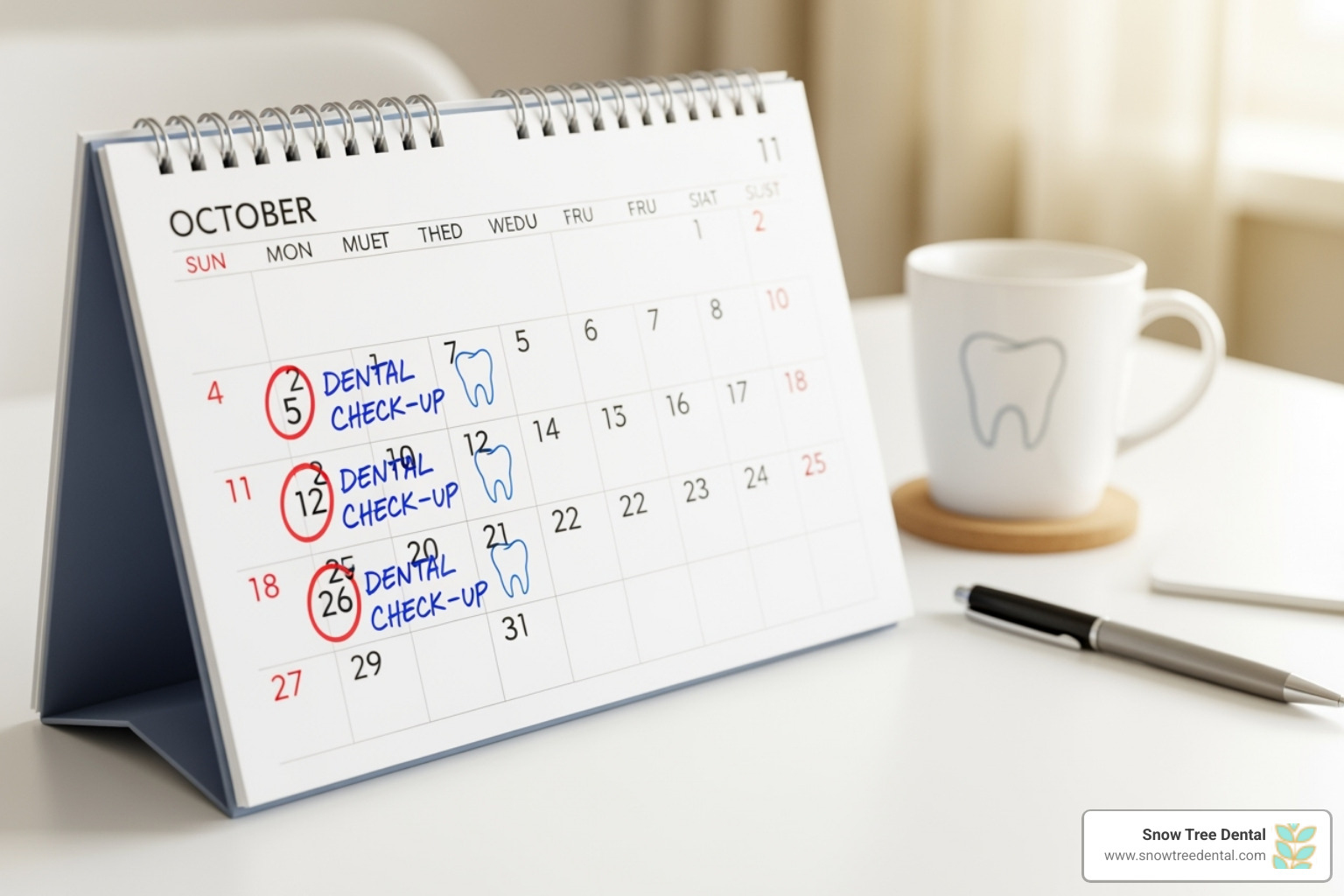
Professional bad breath treatment at the Dentist’s Office
Professional dental care offers powerful solutions for stubborn bad breath.
- Professional Dental Cleanings: We remove plaque and tartar from hard-to-reach areas, especially below the gumline, providing immediate freshness.
- Gum Disease Therapy: For gum disease, we may recommend scaling and root planing. This deep cleaning removes plaque and tartar from tooth roots, allowing gums to heal and eliminating bacterial hideouts.
- Repairing Faulty Restorations: Old or ill-fitting fillings and crowns can trap food and bacteria. Replacing them is a crucial step in bad breath treatment. Our Cosmetic Dentistry services ensure restorations are both functional and aesthetic.
- Treating Decay and Infections: Addressing cavities and infections removes a primary source of odor and restores oral health.
Building a Long-Term Strategy for Fresh Breath
Maintaining fresh breath long-term requires creating sustainable habits.
- Consistent Hygiene: Continue to brush twice daily, floss once daily, and clean your tongue. This daily dedication is key.
- Regular Dental Check-ups: Visiting us every six months allows us to catch issues early and perform professional cleanings to remove buildup that home care misses.
- Healthy Diet: Eat fresh fruits and vegetables to stimulate saliva and limit sugary foods that feed odor-causing bacteria.
- Quitting Smoking: This is the single most impactful step for smokers, as it eliminates tobacco odor and reduces the risk of dry mouth and gum disease.
- Managing Dry Mouth: If dry mouth is an issue, work with us to find solutions like special rinses or saliva-stimulating products.
Combining professional care with healthy home routines makes fresh breath your new normal.
Frequently Asked Questions about Bad Breath
Here are answers to the most common questions I hear about bad breath treatment.
Can bad breath be a sign of a serious disease?
Yes, in some cases, persistent bad breath can signal a health condition. While most cases are due to oral hygiene, certain odors can be a clue. For example, a fruity smell can be linked to diabetes, a sour smell to GERD (acid reflux), and a fishy or ammonia-like odor to kidney or liver disease. Respiratory infections can also be a cause. If excellent oral hygiene doesn’t resolve bad breath after a few weeks, it’s crucial to see a professional. Your mouth can be a window into your overall health.
Why does my breath still smell after brushing?
This is a common frustration. Even with regular brushing, several factors can cause bad breath:
- Your tongue: The tongue’s surface traps a lot of odor-causing bacteria. Cleaning your tongue daily is essential.
- Trapped food: Flossing is necessary to remove food particles from between teeth that a brush can’t reach.
- Gum disease: Bacteria can hide in deep pockets around the teeth, protected from your toothbrush.
- Dry mouth: A lack of saliva prevents your mouth from cleaning itself effectively.
- Systemic issues: The odor may originate from a medical condition like a sinus infection or acid reflux.
If you’re brushing, flossing, and cleaning your tongue but the problem persists, it’s time for a dental visit.
Are mouthwashes a good bad breath treatment?
It depends on the type. Cosmetic mouthwashes only mask odor temporarily. Therapeutic or antiseptic mouthwashes, however, contain active ingredients that kill odor-causing bacteria or neutralize smelly compounds, making them a helpful part of a bad breath treatment plan.
My biggest tip is to choose an alcohol-free formula. Alcohol can dry out your mouth, which actually makes bad breath worse. Mouthwash should be a supplement to, not a replacement for, brushing, flossing, and tongue cleaning. It provides an extra layer of protection.
Conclusion
You don’t have to live with bad breath. As we’ve discussed, halitosis is often your mouth’s way of signaling that something needs attention. The path to fresh breath starts with mastering the basics: consistent brushing, flossing, and tongue scraping, along with smart lifestyle choices like staying hydrated.
If your best at-home efforts aren’t working, it’s not a failure. It’s a sign to seek professional help. The cause could be anything from hidden gum disease to an underlying health condition. The good news is that bad breath treatment is almost always successful, whether it requires a professional cleaning, a new filling, or coordinating with your doctor.
Conquering bad breath is about more than just odor; it’s about regaining your confidence. For our neighbors in Houston, the team at Snow Tree Dental is here to help. We offer compassionate, expert care to diagnose the root cause of your concerns and create a personalized treatment plan.
Your journey to fresh breath and renewed confidence starts today. Take control of your oral health by scheduling a visit today and smile without holding back.



